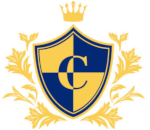The Croatian education system is regulated and sponsored by the Ministry of Education. It is free, but also obligatory in Croatia from the age of 6 until 15. Higher education is normally not free, although some universities offer a quota of free spaces.
The Croatian government recently redesigned both primary and secondary education programmes in order to create a common learning basis for all students. This is normally referred to as the Hrvatski nacionalni obrazovni standard (Croatian national educational standard).
Both public and private schools exist in Croatia, although there are very few of the latter.
Schools in Croatia
Children can go to kindergartens starting at the age of 1, but it is not compulsory. Primary education in Croatia (Osnovna škola) lasts eight years, from the ages of 6 until 14. This is followed by secondary education (Gimnazija or a specialised school) for another four years.
Students who follow the general course are awarded a Svjedodžba o maturi at the end of Gimnazija (gymnasium). Other options include:
- The International Baccalaureate (Diploma organizacije medjunarodne mature), also awarded by Gimnazija.
- The Svjedodžba o završnom ispitu, awarded by art schools (Umjetnička škola).
- The Svjedodžba o završnom ispitu, awarded by vocational schools (Strukovna škola).
Higher Education
Higher education is divided into two branches: polytechnics (veleučilište) and universities (sveučilište). This is the highest levels of education, which is in compliance with the Bologna Declaration and therefore equivalent to any higher education within the EU.


